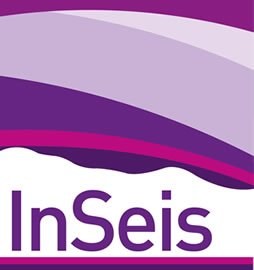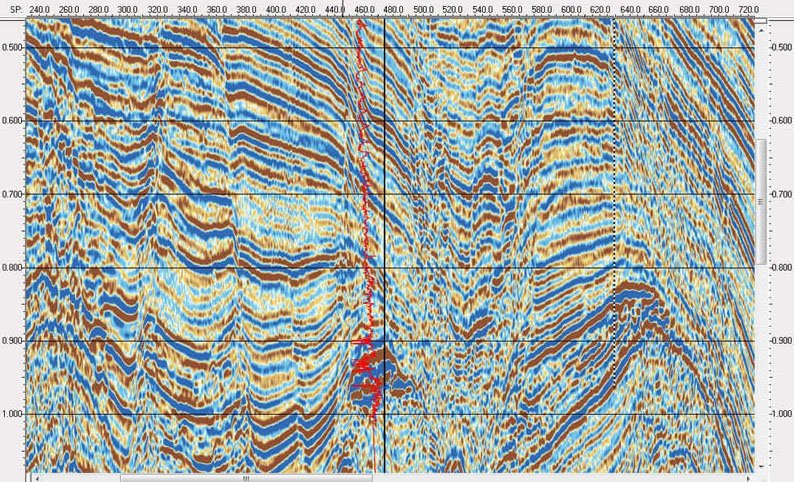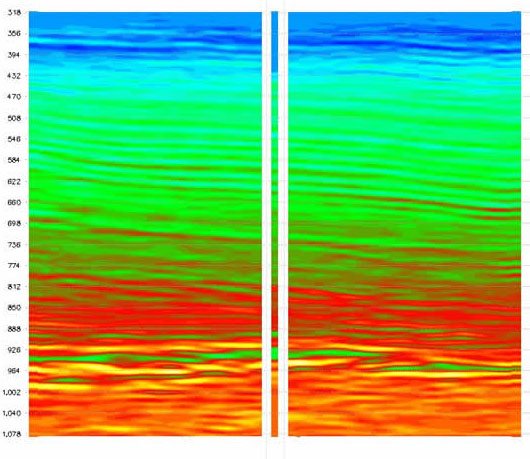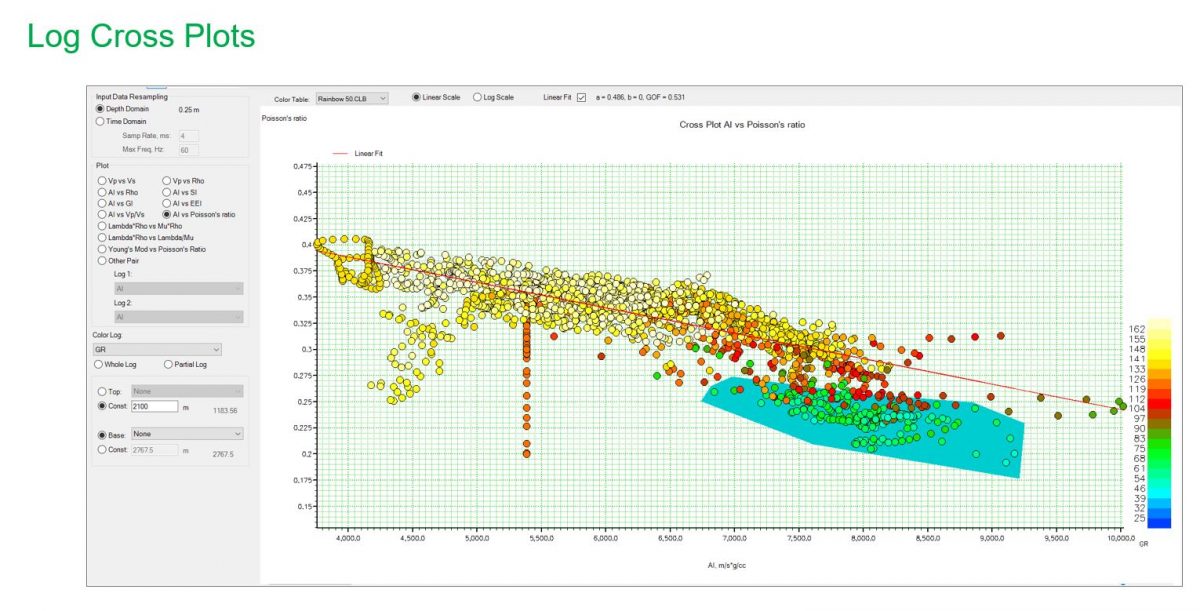
Get a Free Demo
Contact us for a free demo
Seismic Inversion Suite For S&P Global and Schlumberger’s Petrel
InSeis is a powerful tool for the conversion of seismic reflectivity data into acoustic impedance. This allows the estimation of properties within the Earth’s subsurface to be established from reflected seismic waves- organised into layered sets which distinguish different formations. There are multiple techniques which can be used in seismic inversion to categorise this data, allowing an interpreter to better understand data as pre-stack or post-stack seismic resolutions, or where applicable, well-log resolutions.
InSeis is a novel approach to seismic inversion which incorporates Coloured Inversion, absolute acoustic impedance in a respective manner and Pre-Stack Inversion which leverages the Simulated Annealing Inversion technology for a multi-parameter approach to uniquely identifying rock and reservoir properties. This will generate acoustic impedance, shear impedance and density volumes which can be correlated with logs and transformed into petrophysical properties for mapping and analysis.
This flexible piece of seismic inversion software allows the petroleum geologist to use multiple means of identifying and categorising data to better fit the project at hand.
InSeis utilises a ‘model driven’ inversion to provide you with a solution which is independent of the starting model, with good well-to-seismic ties, allowing for excellent results. Provided that the true impedance values are in the range derived from the macro model, the inversion will generate impedance that best represents the seismic traces provided.
InSeis is branded as Kingdom Seismic Inversion module in S&P Global. For a trial version, please contact your local IHSM sales team. Please note that currently Pre-Stack Inversion is only available as part of the Kingdom Seismic Inversion module and is not available on Schlumberger’s Petrel InSeis.
InSeis, whether on Schlumberger’s Petrel (CI and SA only) or S&P Global, allows for quality control in each stage of the multiple approaches it takes toward seismic inversion. InSeis adapts to the situation at hand both quickly and accurately, with all steps reviewed and methods of problem solving presented in the software ensuring that all associated uncertainty is reduced to a minimum.
InSeis, whether on Schlumberger’s Petrel or IHS Kingdom, allows for quality control in each stage of the multiple approaches it takes toward seismic inversion. InSeis adapts to the situation at hand both quickly and accurately, with all steps reviewed and methods of problem solving presented in the software ensuring that all associated uncertainty is reduced to a minimum.
InSeis Features
Coloured Inversion Features
 Coloured Inversion in InSeis is a fast and a lightweight process which allows the interpreter to quickly generate pseudo-relative acoustic impedance data type from reflection seismic data, in a simple and easy to use manner.
Coloured Inversion in InSeis is a fast and a lightweight process which allows the interpreter to quickly generate pseudo-relative acoustic impedance data type from reflection seismic data, in a simple and easy to use manner.InSeis allows the user to calibrate logs, analyse impedance log spectra and match to log trends, rotate phases to complete the process, set up parameters as they see fit, and invert volumes.
The purpose of Coloured Inversion in InSeis is the generation of far more accurate seismic interpretations on single or multi-wells, creating outputs with well-ties, which allow the interpreter to make decisions based upon this data with confidence.
Simulated Annealing Inversion Features
 Simulated Annealing Inversion in InSeis is a way to achieve both relative and absolute acoustic impedance by applying the model directly via forward-modelling. InSeis computes seismic responses of many impedance models to determine the optimal model – which gives a predicted seismic response which matches observed seismic traits.
Simulated Annealing Inversion in InSeis is a way to achieve both relative and absolute acoustic impedance by applying the model directly via forward-modelling. InSeis computes seismic responses of many impedance models to determine the optimal model – which gives a predicted seismic response which matches observed seismic traits.In Simulated Annealing Inversion, parameters are applied such as the seismic wavelet. These wavelets may be extracted from seismic data within the program, or imported from an external source should the interpreter prefer.
Furthermore, InSeis Simulated Annealing Inversion allows for log and seismic matching, wavelet estimation, proper calculation of misfits with seismic scalar estimation, determines optimal job parameterisation, while supporting multi-CPU processing so volume generation is not an arduous task and the user can carry on working. InSeis is also capable of generating highly detailed macromodels which allow for far more detail to be added to your velocity trend model.
InSeis allows the interpreter to derive parameter space from the well log, seismic velocity or even impedance volume. The interpreter is also able to tune the Simulated Annealing algorithm as they see fit in the test phase.
Kingdom Pre-stack Inversion Features
Pre-stack inversion is often used when post-stack inversion fails to sufficiently differentiate geologic features that have similar P-impedance signatures. It makes use of amplitude versus offset information and inverts offset gathers for P-impedance, S-impedance and density.
More elastic parameters reduce the non-uniqueness in both lithological classification and detecting the presence and effect of fluids on that rock.
While leveraging the existing SA Inversion, it is fast to analyse log data to determine whether elastic and petrophysical parameters distinguishing rock properties and it therefore quickly establishes whether pre-stack inversion is even worth trying.
Providing elastic parameter transforming to Poisson’s ratio, Young’s modulus etc. it estimates porosity, VSH, SW and TOC using Extended Elastic Impedance (EEI) and log correlation and maps reservoir properties using polygons relating elastic and petrophysical parameters.
KSI’s Pre-Stack Inversion is simple to set up and easy to parametrize, supporting multi-CPU to maximise processing throughput
It is widely used in the industry because it has proven to be a highly effective approach in characterising both conventional and unconventional reservoirs.

